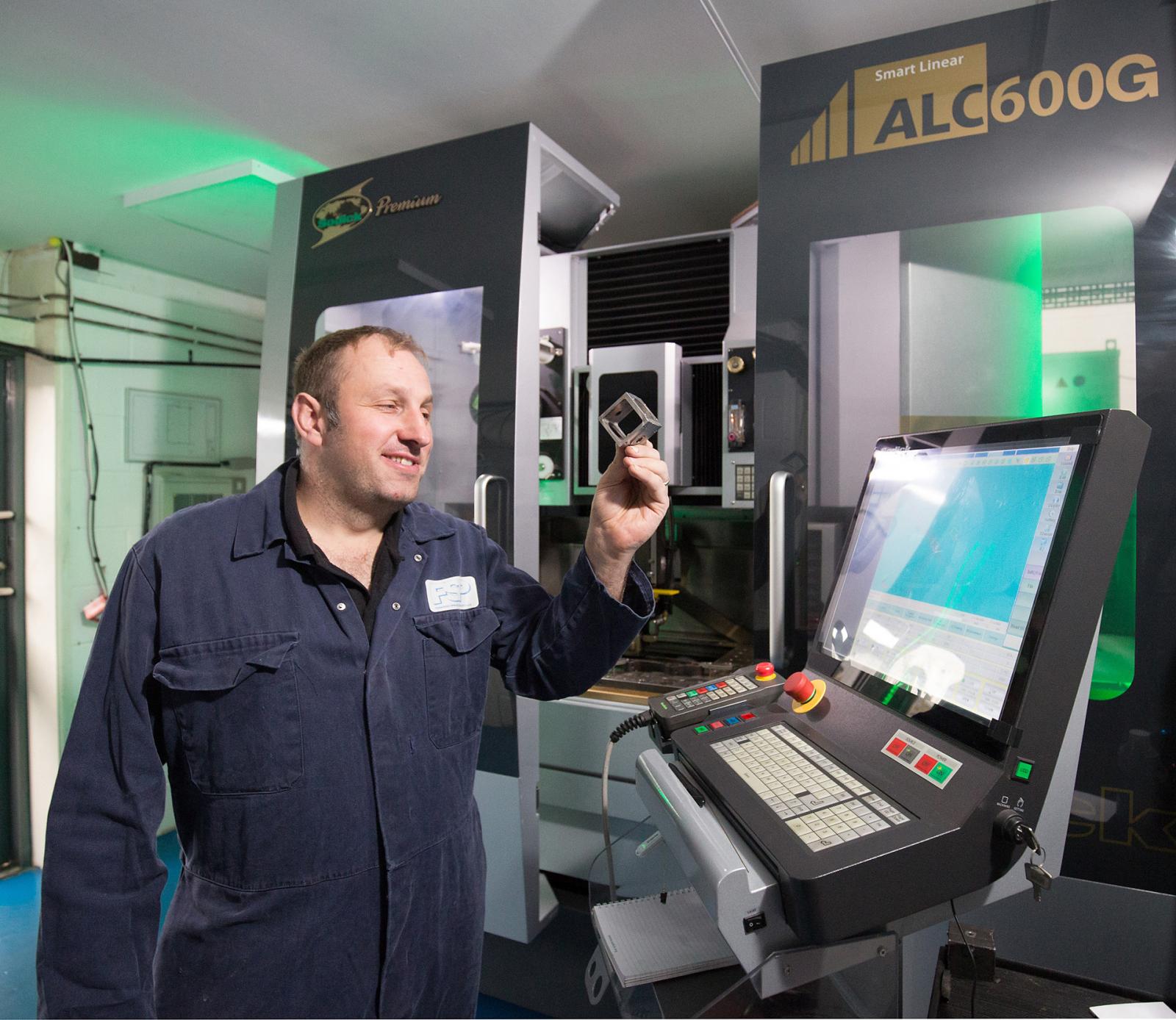
A new wire erosion machine will help Derby-based Foremost Specialist Products take on ‘complex and awkward parts that no else wants to tackle’.
The new Sodick ALC600G CNC machine from Sodi-Tech EDM has already proved its worth on stainless steel tubular stem guides for power generator turbines.
To help the company in its role as a complex parts specialist, Foremost calls on a range CNC machine tools, including multi-axis machining centres, turning centres, horizontal borers (up to 2.5 tonne capacity) and EDM machines. As a matter of course, any machines approaching the end of their natural working life are replaced with the latest technology, which was the case recently with one of the company’s two wire EDM machines
“We won a contract for an awkward, tricky part and our existing EDM couldn’t offer four-axis cutting and didn’t have enough memory to take on the job anyway,” explains the company’s Engineering Director Joe Walker. “We were tasked with producing a number of cross-holes in stainless steel stem guides for turbines used in power generators. The holes are angled in two planes are must be held to extremely tight tolerances.”
When Mr Walker looked to the marketplace for a suitable machine capable of processing the stem guides and other complex parts he was drawn to Sodi-Tech EDM.
“I really liked the feel of the Sodick ALC600G – such were its capabilities that it felt as if we would be moving from a small hatchback to a supercar,” he says. “I was also attracted to the excellent technical support on offer from Sodi-Tech EDM, which is vital for a company such as Foremost where complex parts are our core business.
“We are finding the machine offers so many benefits – it is making particularly easy work of the stem guides,” says Mr Walker. “Some of the guides have six or eight holes, typically measuring from 1.3 to 3.0mm in diameter, but one of the latest has 28. The Sodick ALC600G gives us peace of mind that the work will be completed efficiently and accurately, every time.
“We have noticed a real difference in the tolerances we can now hold reliably, as well as vastly improved surface finish,” says Mr Walker. “Moreover, I would say the new machine is up to 50% quicker on many jobs than the machine it has replaced. We actually have one other EDM machine on site, but due to the new Sodick, this is virtually redundant and we are thinking of selling it. So in effect, the ALC600G has replaced the work of two machines.”
The new Sodick ha 350mm of travel in Z-axis, which Foremost says has helped the company take on thick work that it previously would have to turn down.
Power generation is a recurring theme at Foremost. For instance, as well as specialising in parts such as steam boiler fittings and heat exchanger refurbishments, the company is also well known for its ability to build, refurbish and repair full size steam traction engines. These self-propelled steam engines were used during the golden age of industry to move heavy loads on roads, plough farmland or provide power at a remote location. They are sometimes called road locomotives to distinguish them from railway locomotives.
“I’ve been working on steam traction engines my whole life,” says Mr Walker. “This is the kind of work that first got me into engineering. At first it was a hobby, but as word spread, steam traction projects have become a stream of revenue for the business.”
Foremost works on all types of steam traction engines, including road and some rail, of all ages. The company is today renowned for its professionalism and quality of output, often showing the engines at exhibitions up and down the country. Among the principal engine systems produced using EDM is the valve gear.
“Valve components are often complex and demand tight tolerances and high surface finishes, even when used on steam traction engines, as these factors help determine functionality and efficiency,” he says. “Using the new Sodick ALC600G will be of enormous benefit in this regard.”